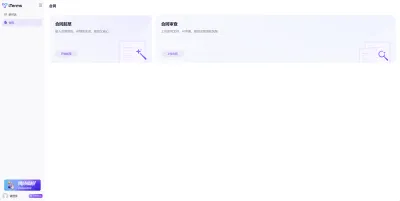DXVK
A Vulkan-based translation layer for Direct3D 8/9/10/11 which allows running 3D applications on Linux using Wine.
For the current status of the project, please refer to the project wiki.
The most recent development builds can be found here.
Release builds can be found here.
How to use
In order to install a DXVK package obtained from the release page into a given wine prefix, copy or symlink the DLLs into the following directories as follows, then open winecfg and manually add DLL overrides for d3d8, d3d9, d3d10core, d3d11 and dxgi.
In a default Wine prefix that would be as follows:
export WINEPREFIX=/path/to/wineprefix
cp x64/*.dll $WINEPREFIX/drive_c/windows/system32
cp x32/*.dll $WINEPREFIX/drive_c/windows/syswow64
winecfg
For a pure 32-bit Wine prefix (non default) the 32-bit DLLs instead go to the system32 directory:
export WINEPREFIX=/path/to/wineprefix
cp x32/*.dll $WINEPREFIX/drive_c/windows/system32
winecfg
Verify that your application uses DXVK instead of wined3d by enabling the HUD (see notes below).
In order to remove DXVK from a prefix, remove the DLLs and DLL overrides, and run wineboot -u to restore the original DLL files.
Tools such as Steam Play, Lutris, Bottles, Heroic Launcher, etc will automatically handle setup of dxvk on their own when enabled.
DLL dependencies
Listed below are the DLL requirements for using DXVK with any single API.
- d3d8:
d3d8.dllandd3d9.dll - d3d9:
d3d9.dll - d3d10:
d3d10core.dll,d3d11.dllanddxgi.dll - d3d11:
d3d11.dllanddxgi.dll
Notes on Vulkan drivers
Before reporting an issue, please check the Wiki page on the current driver status and make sure you run a recent enough driver version for your hardware.
Online multi-player games
Manipulation of Direct3D libraries in multi-player games may be considered cheating and can get your account banned. This may also apply to single-player games with an embedded or dedicated multiplayer portion. Use at your own risk.
HUD
The DXVK_HUD environment variable controls a HUD which can display the framerate and some stat counters. It accepts a comma-separated list of the following options:
devinfo: Displays the name of the GPU and the driver version.fps: Shows the current frame rate.frametimes: Shows a frame time graph.submissions: Shows the number of command buffers submitted per frame.drawcalls: Shows the number of draw calls and render passes per frame.pipelines: Shows the total number of graphics and compute pipelines.descriptors: Shows the number of descriptor pools and descriptor sets.memory: Shows the amount of device memory allocated and used.gpuload: Shows estimated GPU load. May be inaccurate.version: Shows DXVK version.api: Shows the D3D feature level used by the application.cs: Shows worker thread statistics.compiler: Shows shader compiler activitysamplers: Shows the current number of sampler pairs used [D3D9 Only]scale=x: Scales the HUD by a factor ofx(e.g.1.5)opacity=y: Adjusts the HUD opacity by a factor ofy(e.g.0.5,1.0being fully opaque).
Additionally, DXVK_HUD=1 has the same effect as DXVK_HUD=devinfo,fps, and DXVK_HUD=full enables all available HUD elements.
Logs
When used with Wine, DXVK will print log messages to stderr. Additionally, standalone log files can optionally be generated by setting the DXVK_LOG_PATH variable, where log files in the given directory will be called app_d3d11.log, app_dxgi.log etc., where app is the name of the game executable.
On Windows, log files will be created in the game's working directory by default, which is usually next to the game executable.
Frame rate limit
The DXVK_FRAME_RATE environment variable can be used to limit the frame rate. A value of 0 uncaps the frame rate, while any positive value will limit rendering to the given number of frames per second. Alternatively, the configuration file can be used.
Device filter
Some applications do not provide a method to select a different GPU. In that case, DXVK can be forced to use a given device:
DXVK_FILTER_DEVICE_NAME="Device Name"Selects devices with a matching Vulkan device name, which can be retrieved with tools such asvulkaninfo. Matches on substrings, so "VEGA" or "AMD RADV VEGA10" is supported if the full device name is "AMD RADV VEGA10 (LLVM 9.0.0)", for example. If the substring matches more than one device, the first device matched will be used.
Note: If the device filter is configured incorrectly, it may filter out all devices and applications will be unable to create a D3D device.
Debugging
The following environment variables can be used for debugging purposes.
VK_INSTANCE_LAYERS=VK_LAYER_KHRONOS_validationEnables Vulkan debug layers. Highly recommended for troubleshooting rendering issues and driver crashes. Requires the Vulkan SDK to be installed on the host system.DXVK_LOG_LEVEL=none|error|warn|info|debugControls message logging.DXVK_LOG_PATH=/some/directoryChanges path where log files are stored. Set tononeto disable log file creation entirely, without disabling logging.DXVK_DEBUG=markers|validationEnables use of theVK_EXT_debug_utilsextension for translating performance event markers, or to enable Vulkan validation, respecticely.DXVK_CONFIG_FILE=/xxx/dxvk.confSets path to the configuration file.DXVK_CONFIG="dxgi.hideAmdGpu = True; dxgi.syncInterval = 0"Can be used to set config variables through the environment instead of a configuration file using the same syntax.;is used as a seperator.
Graphics Pipeline Library
On drivers which support VK_EXT_graphics_pipeline_library Vulkan shaders will be compiled at the time the game loads its D3D shaders, rather than at draw time. This reduces or eliminates shader compile stutter in many games when compared to the previous system.
In games that load their shaders during loading screens or in the menu, this can lead to prolonged periods of very high CPU utilization, especially on weaker CPUs. For affected games it is recommended to wait for shader compilation to finish before starting the game to avoid stutter and low performance. Shader compiler activity can be monitored with DXVK_HUD=compiler.
This feature largely replaces the state cache.
Note: Games which only load their D3D shaders at draw time (e.g. most Unreal Engine games) will still exhibit some stutter, although it should still be less severe than without this feature.
State cache
DXVK caches pipeline state by default, so that shaders can be recompiled ahead of time on subsequent runs of an application, even if the driver's own shader cache got invalidated in the meantime. This cache is enabled by default, and generally reduces stuttering.
The following environment variables can be used to control the cache:
DXVK_STATE_CACHE: Controls the state cache. The following values are supported:disable: Disables the cache entirely.reset: Clears the cache file.
DXVK_STATE_CACHE_PATH=/some/directorySpecifies a directory where to put the cache files. Defaults to the current working directory of the application.
This feature is mostly only relevant on systems without support for VK_EXT_graphics_pipeline_library
Build instructions
In order to pull in all submodules that are needed for building, clone the repository using the following command:
git clone --recursive https://github.com/doitsujin/dxvk.git
Requirements:
- wine 7.1 or newer
- Meson build system (at least version 0.49)
- Mingw-w64 compiler and headers (at least version 10.0)
- glslang compiler
Building DLLs
The simple way
Inside the DXVK directory, run:
./package-release.sh master /your/target/directory --no-package
This will create a folder dxvk-master in /your/target/directory, which contains both 32-bit and 64-bit versions of DXVK, which can be set up in the same way as the release versions as noted above.
In order to preserve the build directories for development, pass --dev-build to the script. This option implies --no-package. After making changes to the source code, you can then do the following to rebuild DXVK:
# change to build.32 for 32-bit
cd /your/target/directory/build.64
ninja install
Compiling manually
# 64-bit build. For 32-bit builds, replace
# build-win64.txt with build-win32.txt
meson setup --cross-file build-win64.txt --buildtype release --prefix /your/dxvk/directory build.w64
cd build.w64
ninja install
The D3D8, D3D9, D3D10, D3D11 and DXGI DLLs will be located in /your/dxvk/directory/bin.
Build troubleshooting
DXVK requires threading support from your mingw-w64 build environment. If you are missing this, you may see "error: ‘std::cv_status’ has not been declared" or similar threading related errors.
On Debian and Ubuntu, this can be resolved by using the posix alternate, which supports threading. For example, choose the posix alternate from these commands:
update-alternatives --config x86_64-w64-mingw32-gcc
update-alternatives --config x86_64-w64-mingw32-g++
update-alternatives --config i686-w64-mingw32-gcc
update-alternatives --config i686-w64-mingw32-g++
For non debian based distros, make sure that your mingw-w64-gcc cross compiler
does have --enable-threads=posix enabled during configure. If your distro does
ship its mingw-w64-gcc binary with --enable-threads=win32 you might have to
recompile locally or open a bug at your distro's bugtracker to ask for it.
DXVK Native
DXVK Native is a version of DXVK which allows it to be used natively without Wine.
This is primarily useful for game and application ports to either avoid having to write another rendering backend, or to help with port bringup during development.
Release builds are built using the Steam Runtime.
How does it work?
DXVK Native replaces certain Windows-isms with a platform and framework-agnostic replacement, for example, HWNDs can become SDL_Window*s, etc.
All it takes to do that is to add another WSI backend.
Note: DXVK Native requires a backend to be explicitly set via the DXVK_WSI_DRIVER environment variable. The current built-in options are SDL2 and GLFW.
DXVK Native comes with a slim set of Windows header definitions required for D3D9/11 and the MinGW headers for D3D9/11. In most cases, it will end up being plug and play with your renderer, but there may be certain teething issues such as:
__uuidof(type)is supported, but__uuidof(variable)is not supported. Use__uuidof_var(variable)instead.
编辑推荐精选


iTerms
企业专属的AI法律顾问
iTerms是法大大集团旗下法律子品牌,基于最先进的大语言模型(LLM)、专业的法律知识库和强大的智能体架构,帮助企业扫清合规障碍,筑牢风控防线,成为您企业专属的AI法律顾问。


SimilarWeb流量提升
稳定高效的流量提升解决方案,助力品牌曝光
稳定高效的流量提升解决方案,助力品牌曝光


Sora2视频免费生成
最新版Sora2模型免费使用,一键生成无水印视频
最新版Sora2模型免费使用,一键生成无水印视频


Transly
实时语音翻译/同声传译工具
Transly是一个多场景的AI大语言模型驱动的同声传译、专业翻译助手,它拥有超精准的音频识别翻译能力,几乎零延迟的使用体验和支持多国语言可以让你带它走遍全球,无论你是留学生、商务人士、韩剧美剧爱好者,还是出国游玩、多国会议、跨国追星等等,都可以满足你所有需要同传的场景需求,线上线下通用,扫除语言障碍,让全世界的语言交流不再有国界。


讯飞绘文
选题、配图、成文,一站式创作,让内容运营更高效
讯飞绘文,一个AI集成平台,支持写作�、选题、配图、排版和发布。高效生成适用于各类媒体的定制内容,加速品牌传播,提升内容营销效果。


TRAE编程
AI辅助编程,代码自动修复
Trae是一种自适应的集成开发环境(IDE),通过自动化和多元协作改变开发流程。利用Trae,团队能够更快速、精确地编写和部署代码,从而提高编程效率和项目交付速度。Trae具备上下文感知和代码自动完成功能,是提升开发效率的理想工具。


商汤小浣熊
最强AI数据分析助手
小浣熊家族Raccoon,您的AI智能助手,致力于通过先进的人工智能技术,为用户提供高效、便捷的智能服务。无论是日常咨询还是专业问题解答,小浣熊都能以快速、准确的响应满足您的需求,让您的生活更加智能便捷。


imini AI
像人一样思考的AI智能体
imini 是一款超级AI智能体,能根据人类指令,自主思考、自主完成、并且交付结果的AI智能体。


Keevx
AI数字人视频创作平台
Keevx 一款开箱即用的AI数字人视频创作平台,广泛适用于电商广告、企业培训与社媒宣传,让全球企业与个人创作者无需拍摄剪辑,就能快速生成多语言、高质量的专业视频。


即梦AI
一站式AI创作平台
提供 AI 驱动的图片、视频生成及数字人等功能,助力创意创作
推荐工具精选
AI云服务特惠
懂AI专属折扣关注微信公众号
最新AI工具、AI资讯
独家AI资源、AI项目落地

微信扫一扫关注公众号




